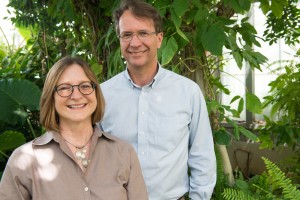July 1, 2014

Hearing danger: predator vibrations trigger plant chemical defenses
Experiments show chewing vibrations, but not wind or insect song, cause response As the cabbage butterfly caterpillar takes one crescent-shaped bite at a time from the edge of a leaf, it doesn’t go unnoticed. This tiny Arabidopsis mustard plant hears its predator loud and clear as chewing vibrations reverberate through leaves and stems, and it reacts…